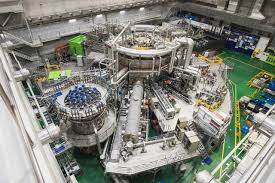
Breaking News
 Shadowy Forces Behind JD Vance's Rise and Grooming as MAGA Successor
Shadowy Forces Behind JD Vance's Rise and Grooming as MAGA Successor
 Who Is Paying Alberta, Canada, Premier Danielle Smith if Not Big Pharma?
Who Is Paying Alberta, Canada, Premier Danielle Smith if Not Big Pharma?
 RFK Jr. kills off $122M in grants to LGBT and diversity causes in sweeping action
RFK Jr. kills off $122M in grants to LGBT and diversity causes in sweeping action
 Trump Unveils Another $825M Arms Sale To Ukraine, While Talking Peace
Trump Unveils Another $825M Arms Sale To Ukraine, While Talking Peace
Top Tech News
 NVIDIA just announced the T5000 robot brain microprocessor that can power TERMINATORS
NVIDIA just announced the T5000 robot brain microprocessor that can power TERMINATORS
 Two-story family home was 3D-printed in just 18 hours
Two-story family home was 3D-printed in just 18 hours
 This Hypersonic Space Plane Will Fly From London to N.Y.C. in an Hour
This Hypersonic Space Plane Will Fly From London to N.Y.C. in an Hour
 Magnetic Fields Reshape the Movement of Sound Waves in a Stunning Discovery
Magnetic Fields Reshape the Movement of Sound Waves in a Stunning Discovery
 There are studies that have shown that there is a peptide that can completely regenerate nerves
There are studies that have shown that there is a peptide that can completely regenerate nerves
 Swedish startup unveils Starlink alternative - that Musk can't switch off
Swedish startup unveils Starlink alternative - that Musk can't switch off
 Video Games At 30,000 Feet? Starlink's Airline Rollout Is Making It Reality
Video Games At 30,000 Feet? Starlink's Airline Rollout Is Making It Reality
 Automating Pregnancy through Robot Surrogates
Automating Pregnancy through Robot Surrogates
 Grok 4 Vending Machine Win, Stealth Grok 4 coding Leading to Possible AGI with Grok 5
Grok 4 Vending Machine Win, Stealth Grok 4 coding Leading to Possible AGI with Grok 5
KSTAR fusion device maintains 100 million degrees for record 20 seconds

However, progress continues to be made on the various approaches to practical nuclear fusion being pursued, of which tokamak reactors remain a frontrunner. In another promising development for the technology, the Korea Superconducting Tokamak Advanced Research (KSTAR) fusion device has set a world record by maintaining plasma at over 100 million °C (180 million °F) for 20 seconds.
Completed in 2007 and achieving first plasma in 2008, in 2016 KSTAR set a world record for the longest operation in high-confinement mode by successfully maintaining a high-temperature hydrogen plasma at about 50 million °C (90 million °F) for 70 seconds. China subsequently claimed a new record in 2017 with its Experimental Advanced Superconducting Tokamak (EAST), managing to maintain plasma at a similar temperature for 102 seconds.

 HERE COMES THE MOTHERSHIP
HERE COMES THE MOTHERSHIP

